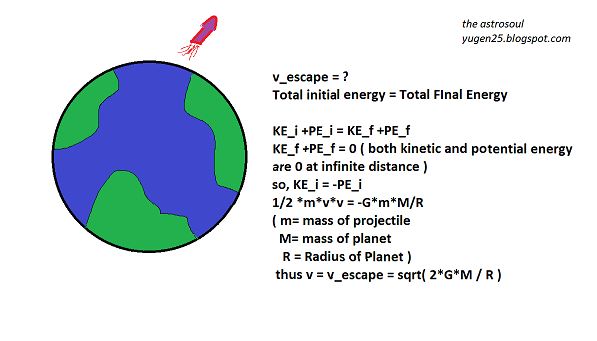In the previous blog I explained why do we need a theory of Stellar Structure and Evolution when we can get information about stars by just observing them. In this blog I will cover-
1. The basic assumptions of theory of Stellar Structure and Evolution
2. Accuracy of Assumptions of theory of Stellar Structure and Evolution
To understand above mentioned aims more clearly, let's first understand( answer these questions - that I generally don't see many writers stress about:
Assumptions are basically the foundation stones for a theory. These are taken as the postulates that are generally assumed to be true throughout the explanation.
Now, What is the need for assumptions to a theory?
-First of all, because they are reasonable - they offer observational or at least mathematical verification.
-- Secondly, Making assumptions simplify our work in terms of crucial/critical understanding and mathematics.
- Lastly, although it is harsh but true: We only have limited information about things. Thus, as long as these are not true in general, we choose not to include them (esp while teaching) instead of including it with ad-hoc suppositions that lack any observational verification.
1. Stars are isolated in space - This is a fairly reasonable assumption for most of the single stars in galaxies as this condition is satisfied to a high degree - compare the distance of sun to its nearest star Proxima Centauri. We are ignoring binary stars and stars in dense clusters.
2.Stars are formed with a homogeneous composition- it is again reasonable as the clouds from which stars are formed are well - mixed.
3.Stars have no magnetic field - This is fully reasonable as for most of the stars magnetism plays a notable role only in phenomena related to surface of stars but in overall life cycle they don't play any significant role.
Stellar evolution is fully determined by internal physical processes which take deep inside the star near it's core.
4. Stars are rotating slowly- This one is a lot harder to justify as most of the stars rotate at a considerable fraction of their critical velocity(*1). Since we do not have a theory that shows how Stellar interior rotates at the birth of the star and making this assumption causes a huge mathematical simplification we are going to hold it.
5. Stars are in mechanical equilibrium(*2) : Majority of stars are in such long lived phases of their evolution that no structural changes are observed for them for most period of times. This implies that there is no noticeable acceleration and all the forces balance each other perfectly.
For an isolated, slowly rotating, homogeneous composition star with no magnetic field these forces are gravity and pressure. Thus, all the stars are in hydrostatic equilibrium.
All of the above mentioned assumptions can be tested just by testing for accuracy of hydrostatic and spherical symmetry assumptions.
Accuracy of Hydrostatic Assumption -
Let's first understand the equation of Hydrostatic support using simplest Newtonian dynamics
Balance between gravity and pressure is called hydrostatic equilibrium.
For a given time t, let's consider a spherical mass shell with infinitesimal thickness δr at a distance r from the centre.
ρ(r) = density at radius r
P(r)δs
Inward force on mass element= Pressure exerted by stellar material on upper surface and gravitational attraction of all stellar material lying within r
P(r+δr)δs+ GM(r)δm/r2 = P(r+δr)δs+ GM(r)ρ(r)δs δr/r2
P(r)δs=P(r+δr)δs+ GM(r)ρ(r)δs δr/r2
so, P(r+δr)-P(r)= GM(r)ρ(r)δr/r2
For infinitesimal element:
P(r+δr)-P(r)/δr = dP(r)/dr
Thus, dP(r)/dr=-GM(r)ρ(r)/r2
which is the equation of Hydrostatic support.
Accuracy of hydrostatic assumption
To answer how valid is that assumption let's consider a situation where inward force and outward force aren't equal which gives rise to acceleration a.
P(r+δr)δs+GM(r)ρ(r)δs δr/r2 -P(r)δs = ρ(r) δs δr a
»dP(r)/dr +GM(r)ρ(r)= ρ(r) a
this is the generalized form of equation of hydrostatic support.
Inward acceleration a = β.g
Spatial displacement from rest after time t = d= 0.5.a.t2 =0.5.β.g.t2
t=(2.r3/G.M.β)1/2
Assuming beta =1 we obtain
t=(2.r3/G.M)1/2
Of course each mass shell will be accelerated at different rate so this should be taken as an average value for star to collapse at radius R.
Since average density is we can also write this t to be
½.(G.ρ)1/2
For sun we obtain a value of 1600 sec or about half an hour. Thus, any significant departure from hydrostatic equilibrium should lead very quickly to an observable phenomenon (sudden collapse or explosion of the star ) . But age of sun is already
This assumption is very much accurate.
Accuracy of spherical symmetry assumption
Consider a star of mass M and radius R with an element of mass δm near the surface of the star.
 |
| star of mass M and radius R with an element of mass δm near the surface rotating at angular speed w |
Gravity supplies the extra centripetal force to make the object move around in a circular path.
Thus, for mass δm, centripetal force = gravitational force
or ω2<<GM/r3
note RHS of last equation is similar to t
>> ω2<<2/t2 (ω=2π/T) where T =rotation period
for spherical symmetry to be valid T>>t
for example, for sun t~2000 sec and T~21 month
Thus, for majority of stars, departures from spherical symmetry can be ignored.
With this we complete the basic assumptions of theory of Stellar Structure and Evolution and see that these assumptions are qualified to build a theory of Stellar Structure and Evolution.
If stars get to that limit, they will begin to fly apart.
*2. Mechanical equilibrium : A state of rest or unaccelerated motion in which sum of all the forces acting on a particle is 0. In case of stars, this state is reached when pressure forces are balanced by gravity. In astronomy, this is called hydrostatic equilibrium.









































